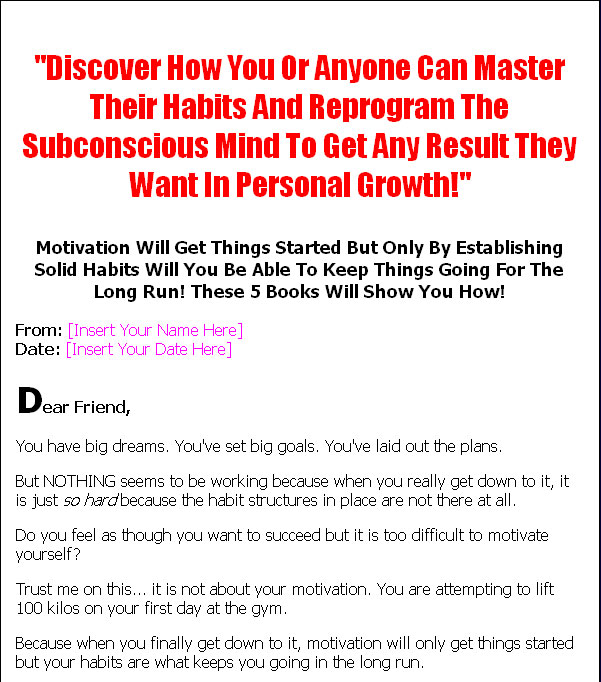Salespage Snapshot:

Table Of Contents
Forward
Chapter 1: Personal Fears
Chapter 2: Collective Concerns
Chapter 3: Awareness and Fear
Chapter 4: Emotional Freedom Techniques
Chapter 5: Affirmations
Chapter 6: Positive Energy And The Here And Now
Chapter 7: Choosing Different Thoughts
Chapter 8: Meditate
Wrapping Up
Sample Content Preview
Chapter 8:
Meditate
Synopsis
Meditation is a practice of consciously centering your attention for a time period. While there are a lot of keys to effective meditation, the essence of the practice is learning to center your attention as you decide.
How does this relate to fear? You might have heard it said that each moment in life offers you a choice: you are able to come from love or fear. There are a lot of ways of stating the contrasting choice that every moment offers, but the basic idea is the same: you are able to live from a positive life-affirming place or in a mode of negativeness and protection.
Breath Through It
Choice is a skill. It means that you are able to see alternatives and center on one versus the other. Put differently, you are able to consciously center your attention according to how you choose to be. This is where meditation comes in. Meditation trains your awareness and your skills of attention.
For instance, one way to meditate is to center on your breathing. You keep your attention centered in your breathe. You find a comfy, upright, seated position in a calm, private space, relax your body, and center on following the natural rhythm of breathing in and breathing out.
The skill comes in when something enters your brain that’s other than paying attention to your breathing, say a thought of other things you have to do, a memory, or some feeling or sensation in your body. In meditation, you deal with your drifting thought, feeling, or sensation in 3 steps:
1. You recognize the thought, feeling, or sensation that’s other than your point of centering (in that case your breathing). You become cognizant that your attention has roamed. You accept whatever has seized your attention. You welcome it into your awareness.
2. You gently release the thought, feeling, or sensation that’s seized your attention. You’re aware of it, but you let it go, without giving it any more time, energy, or care.
3. You return to your meditative centering (again, in that case, your breathing). As many times as your brain wanders to additional thoughts, feelings, or sensations, you repeat these 3 steps. Recognize, release, and return.
The more you meditate the better you become at keeping your focus and the easier it becomes to let go of anything that pulls you away from your centering. This is a skill that you are able to apply to anything that you do in life.
For instance, you may desire to build a better relationship with somebody. That’s a conscious focus for you. As you get close, fears may arise as a result of painful relationship experiences in your past. You are able to treat these fears as you’d treat any thought, feeling, or sensation that springs up in meditation.
First, recognize your fear, observe it, and welcome it into your awareness. Fear has its highest power when it lurks in your subconscious. Become cognizant of your fear and accept it. Don‘t be afraid of it. Note it without reacting to it. This starts to take the emotional edge off of it.
Second, consciously release your fear. Make a decision that you will not give it any more time, energy, or care.
Third, return to centering on your conscious intent to establish an intimate relationship. Center on the feeling of open, honest communication that you want and bring that into the moment. Be that. Act in that way.
Most individuals find that progress in meditation, as well as progress in keeping focus in life, conforms to stages over time. As you practice consistently, you might find that, initially, you become more witting of your thoughts and feelings than ever before. You might not have been so aware of your fears till you began to pay attention to your inner life. It‘s O.K. That‘s natural.
Second, you’ll start to relate to your thoughts, feelings, and fears differently. You‘ll discover that they come and go. You‘ll learn that as you become witting of them and accept them, they start to lose their hold on your attention. You‘ll be able to expel them more and more easily over time.
Finally, you‘ll be able to focus yourself in your chosen point of centre, whether it‘s in deepening a meditative experience or any additional experience that you want in life. Whatever you center on increases. Therefore, your power to consciously focus your attention is the most crucial skill you may master. Meditation is the best way that I know to gain this skill
Other Details- Ebook (PDF, DOC), 38 Pages
- Ecover (PSD, JPG)
- File Size: 42,161 KB











